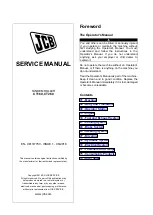
8
3.0 INSTALLATION
;
Installation of the Flexiguard™
Counterweight Rail Fall Arrest System
(FAS) must be supervised by a Qualified
Person. The installation must be certified by a Qualified Person as meeting the criteria for a Certified Anchorage, or that
it is capable of supporting the potential forces that could be encountered during a fall.
1
;
This system is designed to be used on level ground only. If you have any questions regarding the safe terrain for
system installation and operation, please contact 3M.
3.1 PLANNING:
Plan your fall protection system prior to installation of the Counterweight Rail Fall Arrest System (FAS).
Account for all factors that may affect your safety before, during and after a fall. Consider all requirements, limitations
and specifications as defined in Sections 1 and 2.
3.2 ASSEMBLY:
See IFU 5903234 for system assembly steps.
3.3
FOUR-WHEELED, SMALL-EYED SRD TROLLEYS:
Glide Rail Trolley options vary and are based on the applicable trolley
frame system requirements.
;
Connection point for SRDs attached with an approved Double-Locking Carabiner. Small eye minimizes loss of
overhead clearance, keeping the worker’s attachment point as high as possible relative to their dorsal D-Ring. Model
Number and dimensions are specified in Figure 7
.
;
After the Trolleys have been fully installed, reinspect all components for damage, correct orientation, and proper
torque on all nuts and bolts. Attach the intended fall arrest equipment (SRDs, Lanyards, etc.) to each Trolley and walk
the Trolley the entire length of the Track Assembly to ensure the Trolley Wheels travel smoothly in the Track
.
4.0 USE
;
This system is designed to be used on level ground only. If you have any questions regarding if your terrain is safe
for system use, please contact 3M. D
o not attempt to adjust the height of the rail system by setting items under the
leveling feet to gain more height. The Fixed-Height rail system must only be used when all four (4) leveling feet are
safely touching the ground
.
4.1
BEFORE EACH USE:
Verify that your work area and Personal Fall Arrest System (PFAS) meet all criteria defined in
Section 2 and a formal Rescue Plan is in place. Inspect the Counterweight Rail Fall Arrest System FAS per the ‘
User
’
inspection points defined on the ‘
Inspection and Maintenance Log
’ (Table 2). If inspection reveals an unsafe or defective
condition, do not use the system. Remove the system from service and contact 3M regarding replacement or repair.
;
SAFE WORK AREA:
Figure 2 illustrates the Safe Work Area for the Fall Arrest System. Try to work directly below
the Anchorage Connection Point to minimize Swing Fall. The angle of the Self-Retracting Lifeline should never be more
than 30° from vertical and the Horizontal Distance between the anchorage connection point and the worker should not
be greater than 6 ft (1.82 m).
4.2
USING THE COUNTERWEIGHT HORIZONTAL RAIL SYSTEM:
Step 1.
Position the Counterweight Horizontal Rail System over the desired work area/object. Place the unit into position so
the Rail Assembly is centered in the work area to maximize the effective safe work area (See Figure 2), and reduce
the potential for a fall. The Leveling Feet must be positioned over a stable, level surface capable of supporting the
weight of the rail system.
Step 2.
Secure and level the Counterweight Horizontal Rail System: Use the level supplied with the system to determine if the
system is resting level on the work surface. If uneven terrain is present, use the integrated jack assemblies to level
the system. Do not use the rail system if the system is not level within 1 degree in any direction.
Step 3.
Don a Full Body Harness:
Don a Full Body Harness per the manufacturer’s instructions.
Step 4.
Connect the SRD Lifeline to the Full Body Harness:
Connect the Self Locking Snap Hook or Self Locking/Self
Closing Carabiner on the end of the SRD Lifeline to the Front or Back D-Ring on the Full Body Harness. To ensure a
safe connection, always follow the instructions provided in the SRD and Full Body Harness manufacturers’ instructions
and observe the requirements in Section 2 of this manual regarding
Compatibility of Connectors
and
Connections
.
Step 5.
When attached to the SRD:
The worker is free to move about within recommended working areas at normal speeds.
The Trolley should roll freely in the Rail Assembly. The Lifeline should extend smoothly and retract without hesitation.
If slack line condition is created in normal use, the unit should be inspected and serviced by an authorized service
center. Should a fall occur, the SRD will lock and arrest the fall. Upon rescue, remove the SRD from use. Inspect as
described in manufacturer’s instructions. When working with the SRD, allow the lifeline to recoil back into the device
under control. Allowing the lifeline to be fully extended for long periods of time may cause premature weakening of the
retraction spring.
;
The maximum number of people that may be attached to the Counterweight Horizontal Frame System is stated
by the system labelling; each using an individual Trolley and SRD. No more than one (1) person should be attached
to a single Trolley at any time.
;
The SRD line must not drag or bend over a leading edge while accessing the work area. To eliminate that
problem reposition the unit. Follow the SRD manufacturer’s instructions carefully.






























